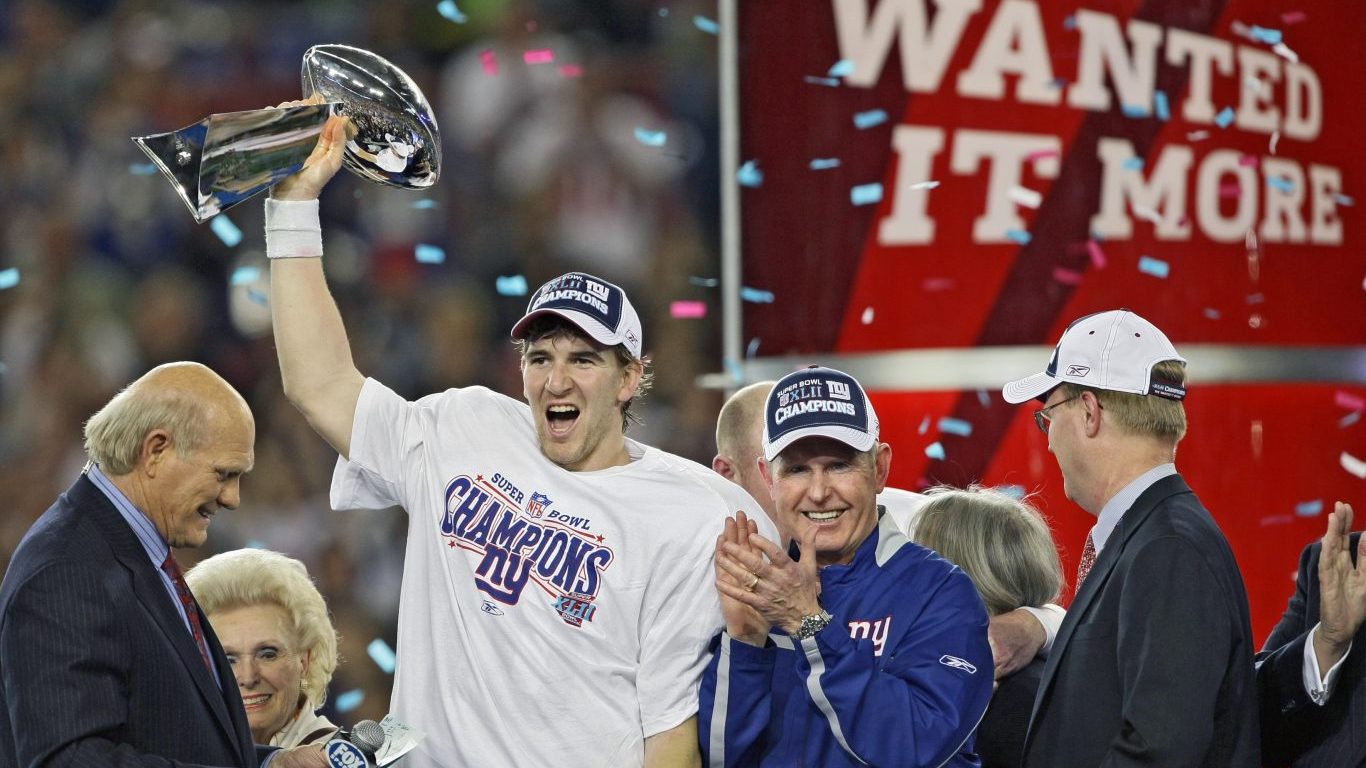Typically, pro sports teams that spend more money on players are more successful. In recent years, American sports leagues have instituted financial restrictions on teams to keep a more level playing field — either a salary cap, or a luxury tax for teams that spend beyond a certain threshold on their payroll. Despite these restrictions, since they were instituted, championship-winning teams typically rank in the top 10 in spending. But if teams draft wisely and negotiate shrewdly, they can win championships despite being outspent by a majority of their opponents.
24/7 Wall St. reviewed data from USA Today and sports contract site Spotrac to determine the teams that won championships on a shoestring budget. These NBA, MLB, NHL, and NFL teams were ranked based on how many other teams in the league had larger payrolls in their title-winning season. We considered teams from each league’s modern era, either during or just before financial fair play rules like the luxury tax or salary cap were adopted. This period encompasses 20-30 years for all four leagues.
The key to winning a championship on the cheap is finding talented young players. Rookies, especially those drafted in later rounds, sign much less lucrative contracts than players who have proved they can make it as pro athletes. Young players who can contribute to team success while taking up a smaller share of the team’s payroll enable the front office to sign high-priced veterans and create a well-rounded team that can compete for titles. Each of the teams on this list features players that would become superstars later in their careers. These are the youngest players to dominate their sport.
These inexpensive rookie deals do not last forever, though. Young players who contribute to titles can use their success as leverage to negotiate more lucrative contracts. Patrick Mahomes, who led the Chiefs to a Super Bowl on a rookie deal that cost Kansas City less than $4.5 million in 2019, will likely earn over $30 million per year soon. His teammates Tyreek Hill and Chris Jones cost Kansas City around $2 million each last season, but both will earn over $16 million in 2020. Players who earn these mega deals must continue to play at a high level, or they risk tanking their team’s chance of success. These are the most overpaid athletes in pro sports.
NBA Teams that won a Championship on a Shoestring Budget
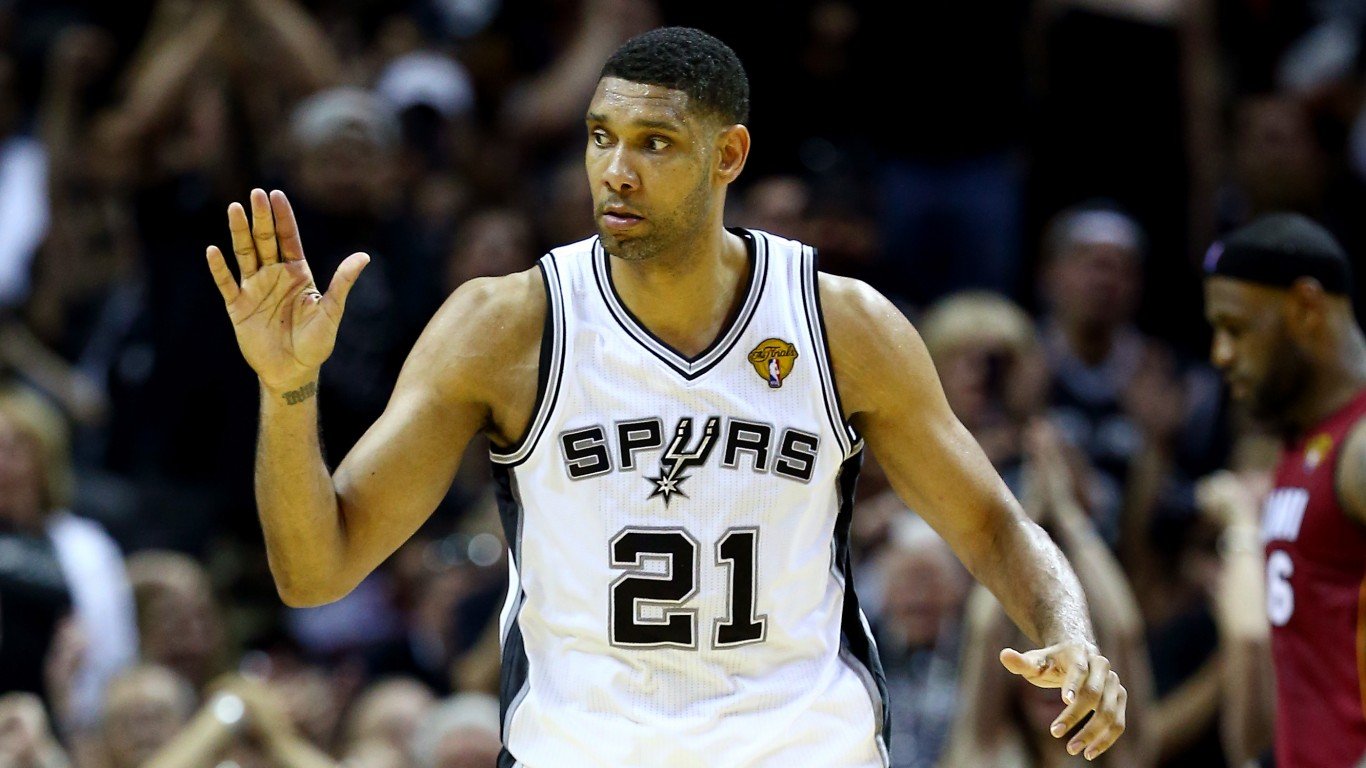
5. 2013-2014 San Antonio Spurs
> Payroll: $63.1 million
> Payroll rank: 19 out of 30 teams
The 2013-2014 Spurs were loaded with talent — with players like Tim Duncan, Tony Parker, Manu Ginobili, and a young Kawhi Leonard. Yet none of them ranked in the top 40 highest paid players that season. After averaging more than $20 million across the previous five seasons, Duncan took a team-friendly deal that paid him just over $10 million that season, helping the small-market Spurs afford Parker’s $12.5 million salary and $10 million for center Tiago Splitter. The 2014 NBA Finals MVP, Kawhi Leonard, was still on his rookie deal that paid him less than $2 million.
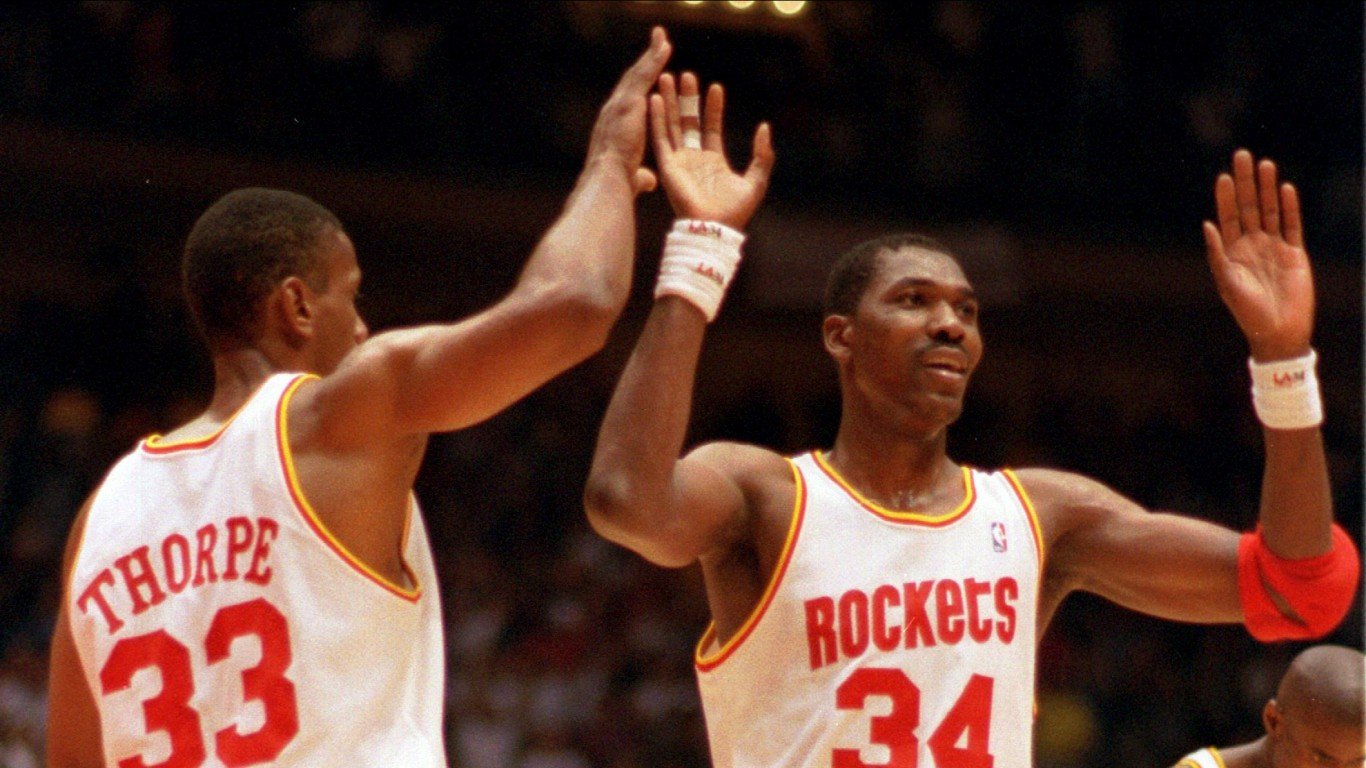
4. 1993-1994 Houston Rockets
> Payroll: $16.8 million
> Payroll rank: 19 out of 27 teams
In the 1993-1994 NBA season, eight teams spent over $20 million on salary, and the average across all teams was just over $18.5 million. Yet the Houston Rockets won their first title with less than $17 million spent on payroll that season. The team was able to win with relatively little spent on payroll, largely because Hakeem Olajuwon earned just $3.2 million that season. That salary made him the 20th-highest paid player in the NBA because he signed an extension in the 1980s, when salaries tended to be lower. “The Dream” would go on to earn his ninth All-Star appearance and lone MVP award that season. This allowed the Rockets to pay Otis Thorpe and Kenny Smith multi-million dollar salaries that season, while young players like Robert Horry and Sam Cassell played well and did not cost the team much on their rookie contracts.
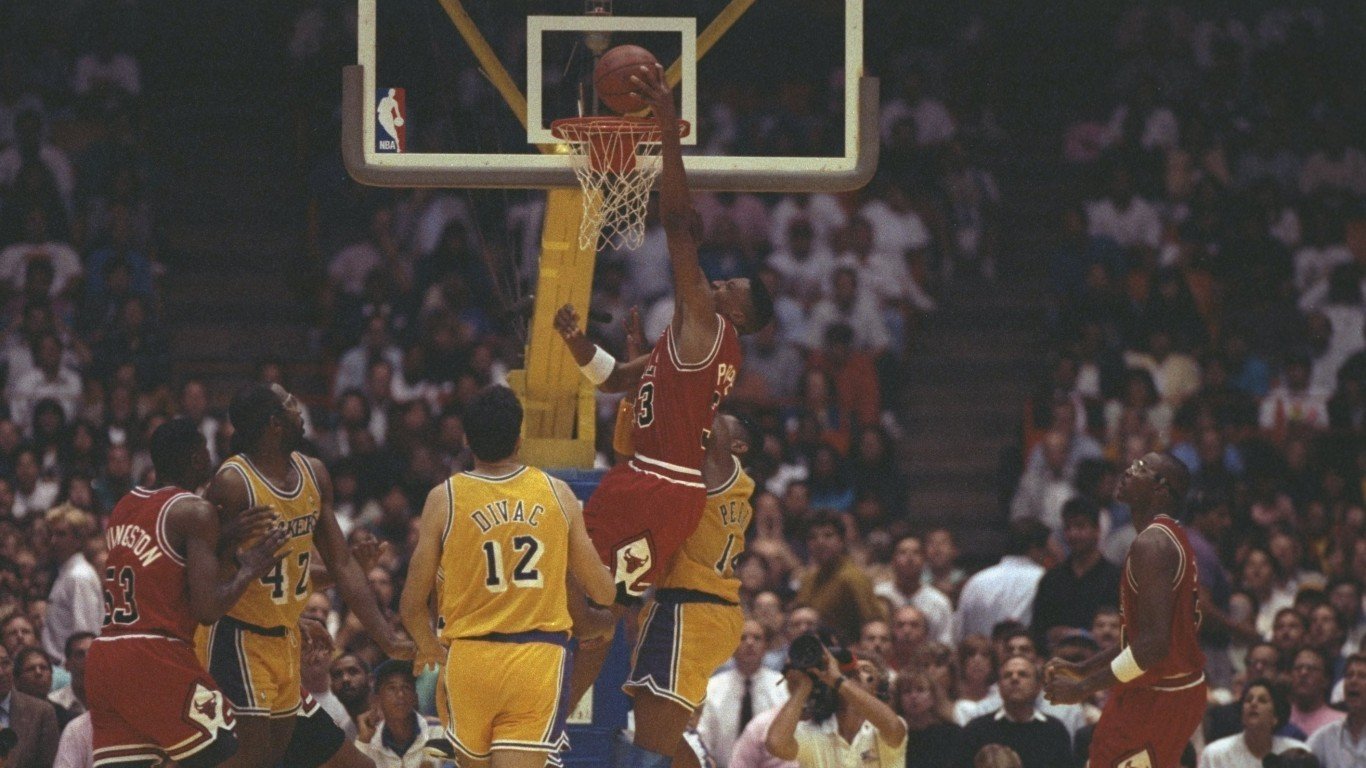
3. 1990-1991 Chicago Bulls
> Payroll: $10.0 million
> Payroll rank: 22 out of 27 teams
NBA salaries of the early 1990s were miniscule compared with salaries today. The Cleveland Cavaliers outspent every other team in the 1990-1991 NBA season with a $14.4 million payroll. The Chicago Bulls spent just over $10 million that year, ranking them 22nd out of 27 teams in payroll. What set them apart, though, was Michael Jordan. Jordan, who won his second MVP that season, had the largest salary at $2.5 million. The Bulls drafted well, surrounding MJ with young and inexpensive talent that would help launch their 1990s dynasty. Scottie Pippen was still playing on his rookie contract and earned just $765,000 that season while averaging 17.8 points, 7.3 rebounds, and 6.2 assists per game. Second-year point guard B.J. Armstrong became an efficient scorer and distributor, while making $425,000 on his rookie deal.

2. 2004-2005 San Antonio Spurs
> Payroll: $47.5 million
> Payroll rank: 24 out of 30 teams
The 2004-2005 New York Knicks had over $102.5 million in payroll, but the Spurs won the title that season with just $47.5 million spent on salary. Tim Duncan’s $14.2 million salary was more than double that of any of his teammates. The Spurs assembled a championship team by signing quality veteran players without overpaying them. Brent Barry, Bruce Bowen, and Robert Horry made less than $9 million combined that season, and the Spurs were able to claim former top overall pick Glenn Robinson off waivers. That season also saw Tony Parker and Manu Ginobili go from promising young players to franchise cornerstones. Ginobili was in the first year of a new contract that paid him $6.6 million, while Parker earned just $1.5 million.
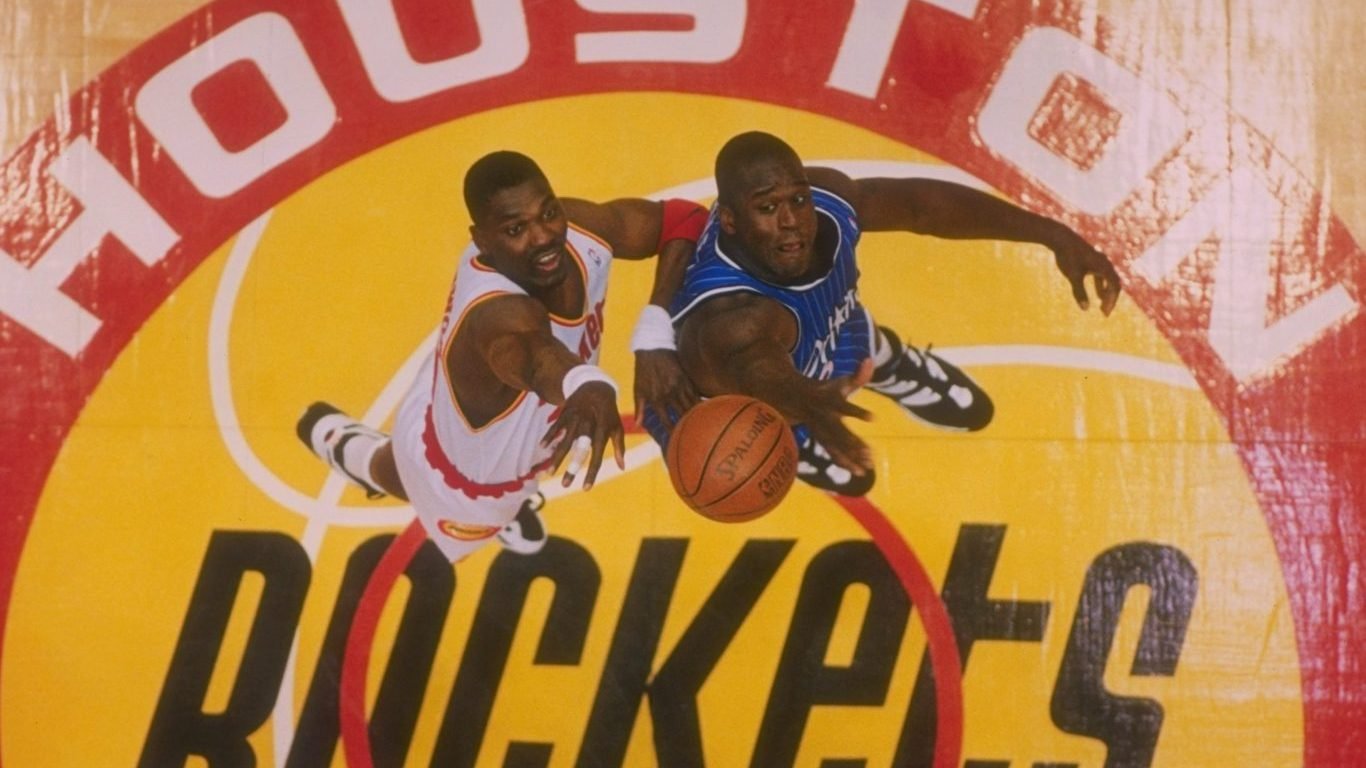
1. 1994-1995 Houston Rockets
> Payroll: $17.6 million
> Payroll rank: 24 out of 27 teams
Though many NBA teams increased their budgets significantly in the 1994 offseason, the Houston Rockets’ payroll only increased by around $800,000 to $17.6 million — the fourth lowest payroll in the NBA. Yet the Rockets were still able to win their second consecutive title in 1995. They did this primarily by trading draft picks for Hall of Famer Clyde Drexler with the Portland Trail Blazers, with Portland paying Drexler’s salary for that season. Reigning MVP Hakeem Olajuwon was the only player the Rockets paid over $3 million that season. Sam Cassell contributed to the team’s championship run making just $845,000 that season.
MLB Teams that won a Championship on a Shoestring Budget
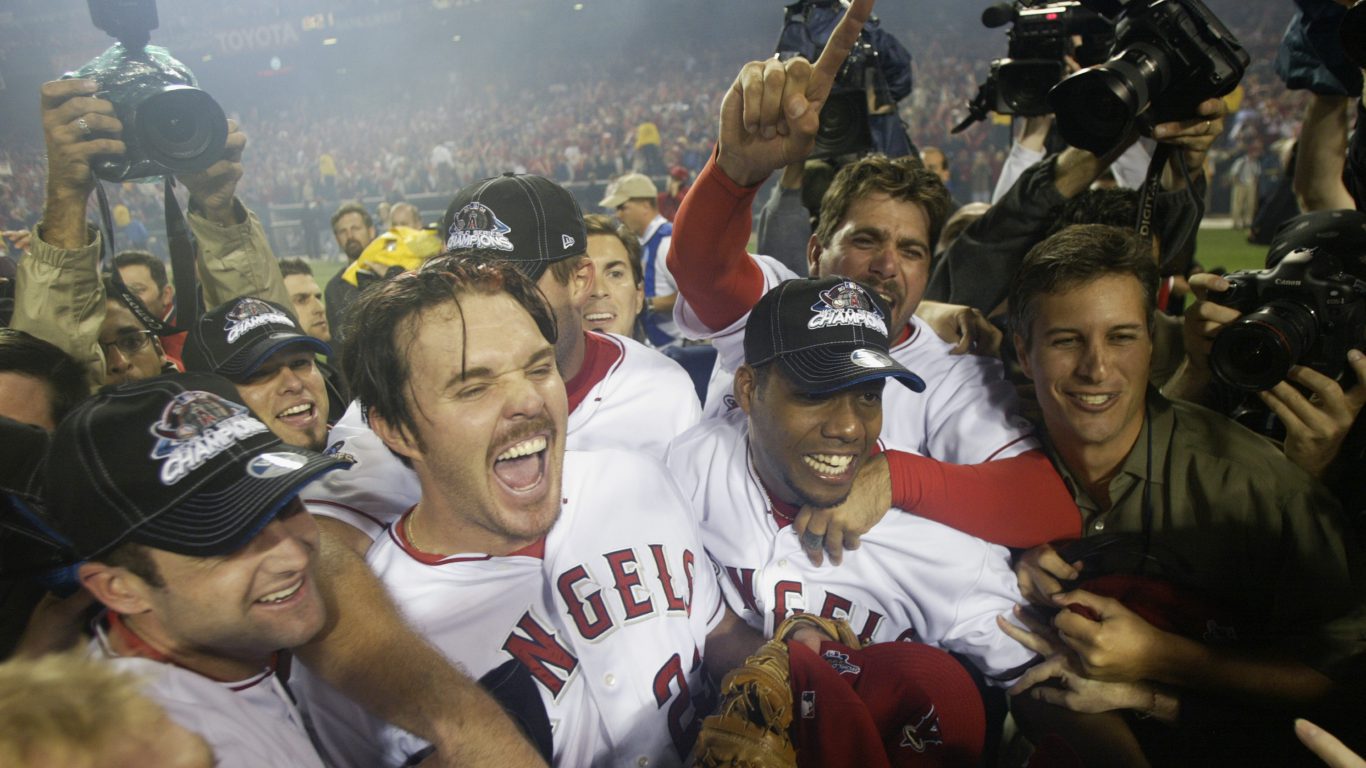
5. 2002 Anaheim Angels
> Payroll: $61.7 million
> Payroll rank: 15 out of 30 teams
In their first round playoff matchup, the 2002 Anaheim Angels, who had a $61.7 million payroll, took down the New York Yankees, whose players earned more than twice as much that season. The Angels went on to win the World Series without a true superstar on their roster. No Anaheim player ranked among the top 25 in salary that season. The Angels’ two most valuable pitchers that season, Jarrod Washburn and Ramon Ortiz, made less than $1 million combined. Starting catcher Bengie Molina, who earned the Gold Glove that season, made just $350,000, while starting left fielder David Eckstein earned just $280,000.
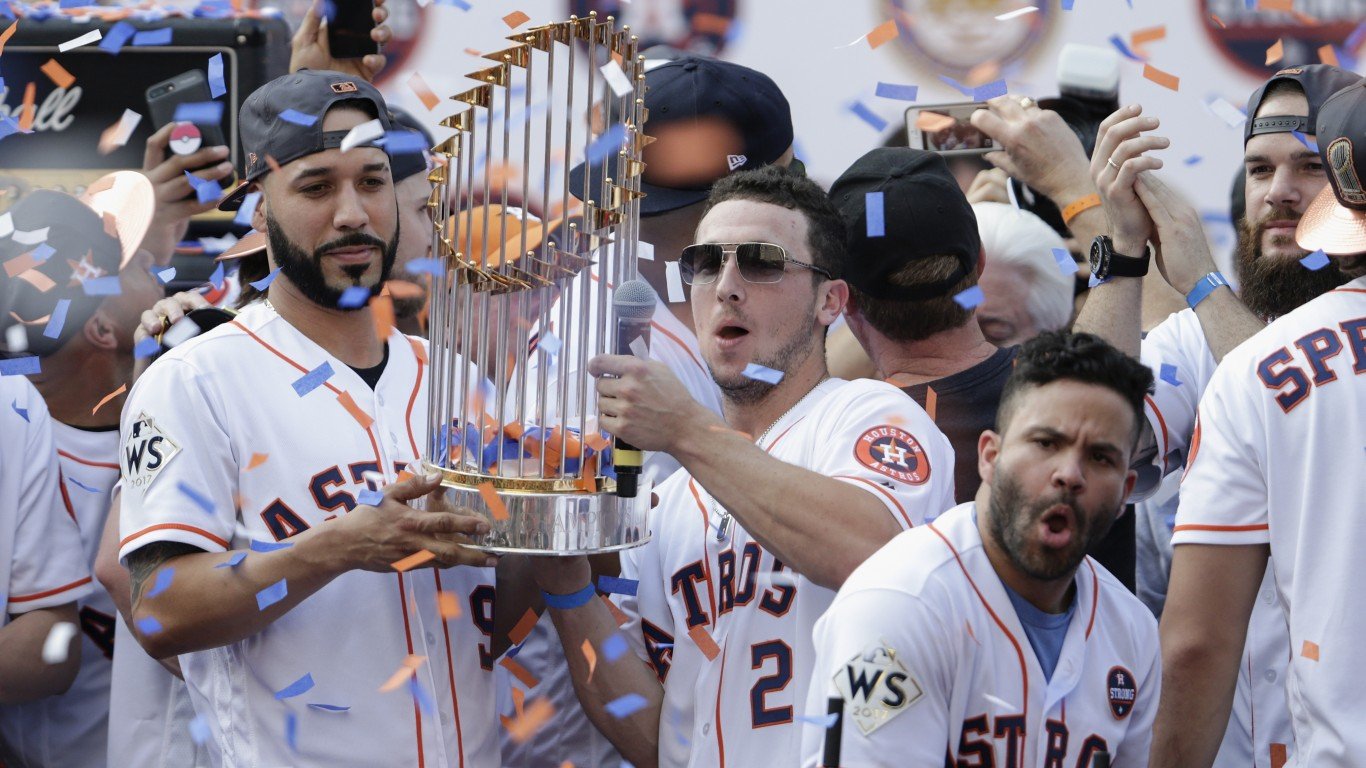
4. 2017 Houston Astros
> Payroll: $127.4 million
> Payroll rank: 15 out of 30 teams
The 2017 Houston Astros had plenty of high-priced talent, with five players earning over $10 million. But it was their younger, lower-paid players who powered Houston to their first title. Jose Altuve made just $4.5 million that season, when he won AL MVP. Fellow All-Star George Springer had a $3.9 million salary. Pitchers Chris Devenski and Lance McCullers Jr. and shortstop Carlos Correa each made the 2017 All-Star team while earning between $500,000 and $600,000. In the World Series, the Astros beat the Los Angeles Dodgers, which had an MLB leading $189.4 million payroll, though the Astros later admitted cheating during that season and World Series.
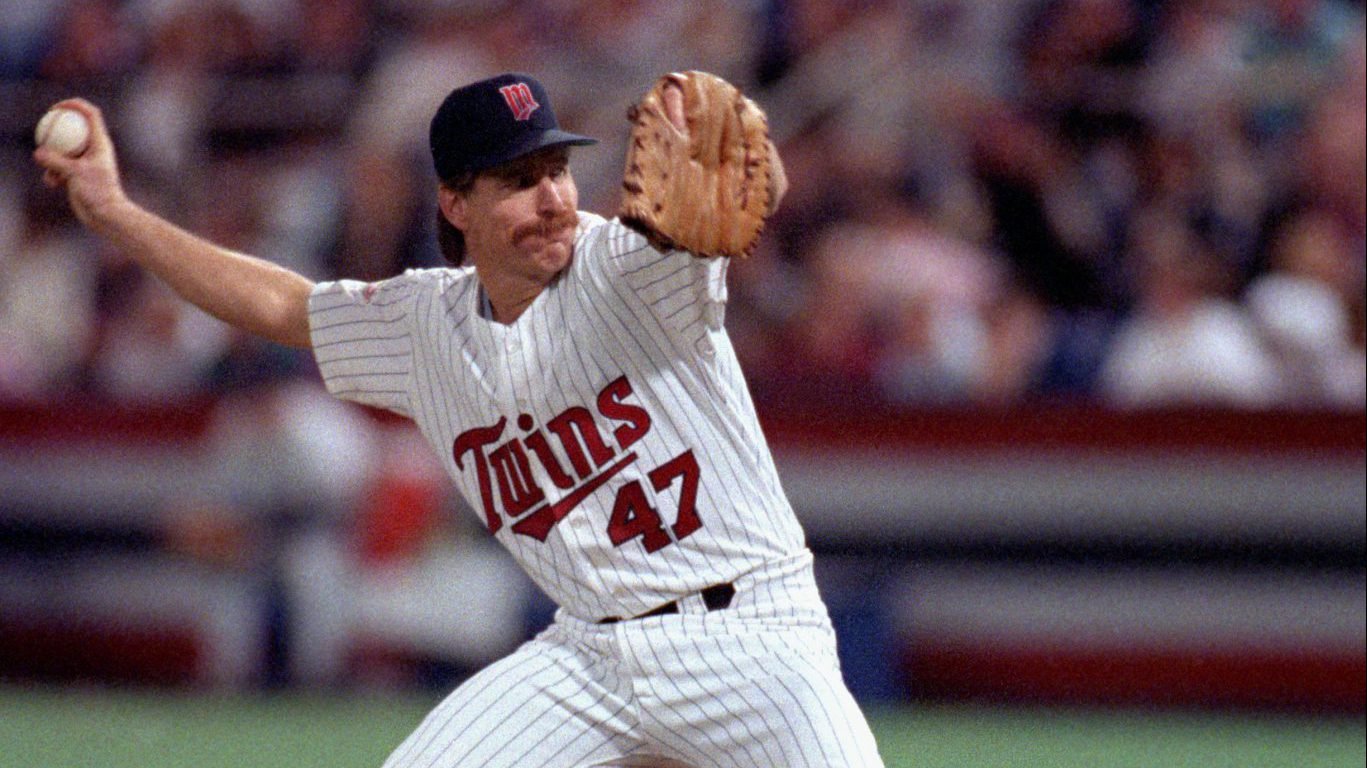
3. 1991 Minnesota Twins
> Payroll: $22.4 million
> Payroll rank: 16 out of 26 teams
The 1991 Minnesota Twins’ payroll of $22.4 million was right in between the top-spending Oakland A’s at $33.6 million and the thrifty Houston Astros at $11.5 million. The Twins players with the highest salaries that season certainly earned their money — future Hall of Famers Kirby Puckett and Jack Morris were the only players making over $3 million, and both earned All-Star nods that season. They also came up clutch in the postseason, as Puckett was named ALCS MVP, and Morris was World Series MVP. Several young players also had career years to help propel the Twins to the title. Second baseman Chuck Knoblauch won Rookie of the Year, pitcher Kevin Tapani had his lowest ever ERA, posting a 16-9 record, and 23-year-old starter Scott Erickson won an MLB-leading 20 games — each of these players made less than $200,000 that season.
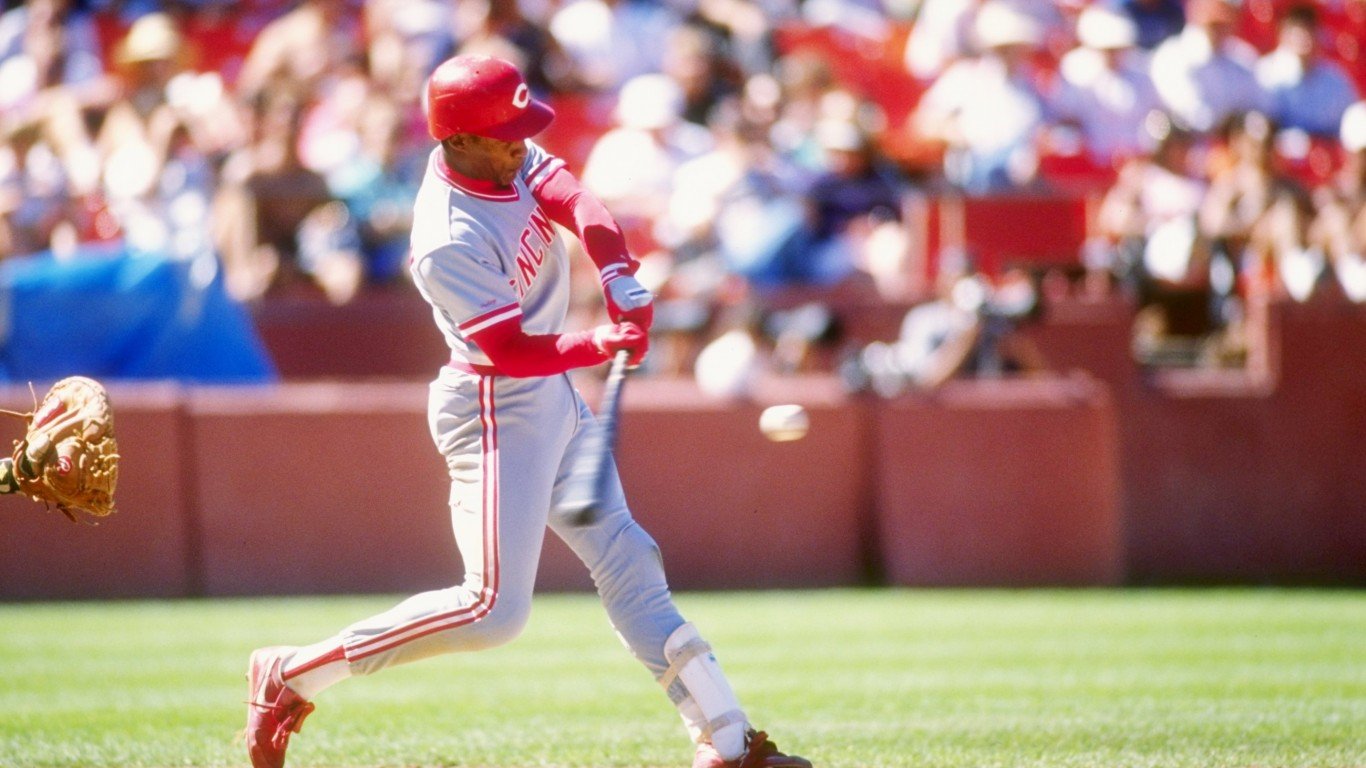
2. 1990 Cincinnati Reds
> Payroll: $14.8 million
> Payroll rank: 20 out of 26 teams
The Cincinnati Reds won the 1990 World Series despite having the seventh-lowest payroll. Just two Reds, Tom Browning and Eric Davis, earned over $2 million that season, ranking them among the top 15 in the MLB. Other than that, no other Cincinnati player ranked in the top 100. Five Reds players earned All-Star nods that season, including future Hall of Famer Barry Larkin. Combined, they earned just over $2 million that season. World Series MVP Jose Rijo earned just $630,000 that year.

1. 2003 Florida Marlins
> Payroll: $48.8 million
> Payroll rank: 25 out of 30 teams
The Florida Marlins won their second World Series in 2003, with a payroll of just $48.8 million. That salary was the sixth lowest of any MLB team that season, well below the average of $70.9 million and less than a third of the top-spending Yankees. A large share of the payroll, $10 million, went to future Hall of Fame catcher Ivan Rodriguez. No other Marlin ranked among the top 150 highest-paid players in 2003. Rookie of the Year pitcher Dontrelle Willis and 20-year-old Miguel Cabrera, who would go on to win two MVPs, both contributed to the team’s success. Centerfielder Juan Pierre earned $1 million that season, while leading the National League in plate appearances, stolen bases, and sacrifice hits.
NHL Teams that won a Championship on a Shoestring Budget
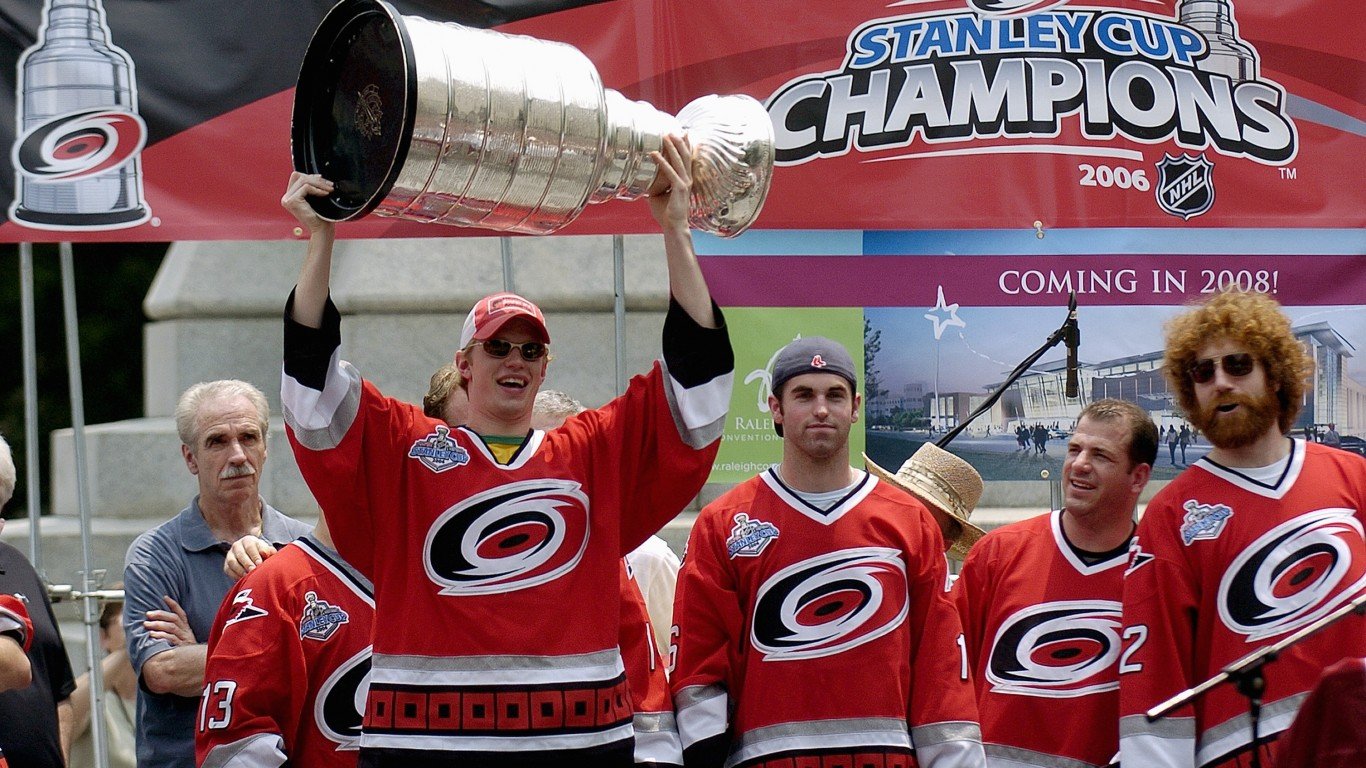
5. 2005-2006 Carolina Hurricanes
> Payroll: $35.3 million
> Payroll rank: 16 out of 30 teams
The season after the NHL lockout, the Carolina Hurricanes had the second-lowest preseason odds to win the Stanley Cup. The team was loaded with young players with low salaries. Carolina’s payroll was $35.3 million, one of the lower amounts in the NHL that season. The team was spurred by the excellent goalkeeping of rookie Cam Ward. He allowed just 2.14 goals per game in the postseason. He won the Conn Smythe at just 22 years old. His salary for the season was $684,000. The team’s leading scorer in the playoffs was also a rookie making less than $1 million — 21-year-old Eric Staal.
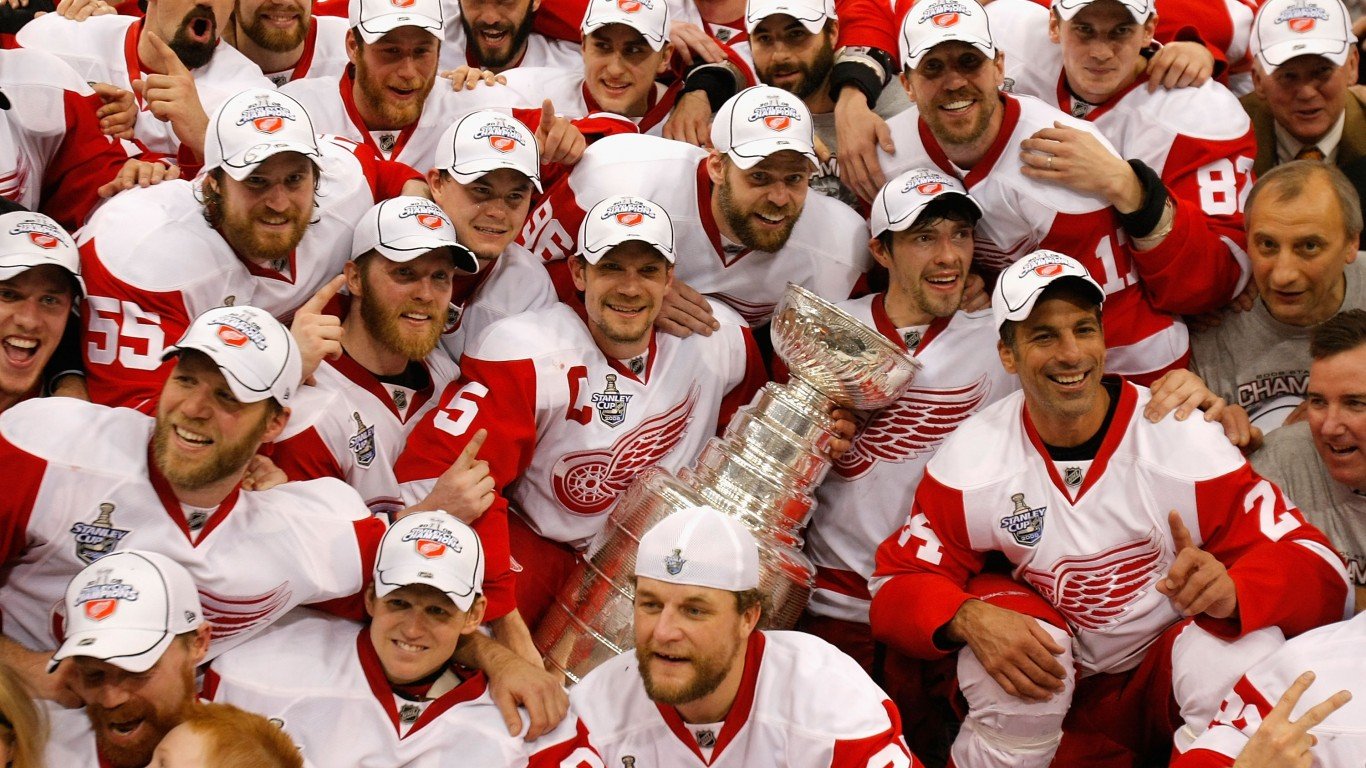
4. 2007-2008 Detroit Red Wings
> Payroll: $44.6 million
> Payroll rank: 16 out of 30 teams
The Detroit Red Wings won the Stanley Cup in 1997, 1998, and 2002. Like other title-winning franchises, Detroit’s payroll ballooned as key players helping to win those championships were rewarded with large contracts, and by the 2003-2004 season, the team had the largest payroll at nearly $78 million. Eventually, high-priced stars like Brett Hull, Steve Yzerman, and Brendan Shanahan began to retire or move on to other teams, allowing younger players like Justin Abdelkader and Johan Franzen to shine, while making under $1 million.
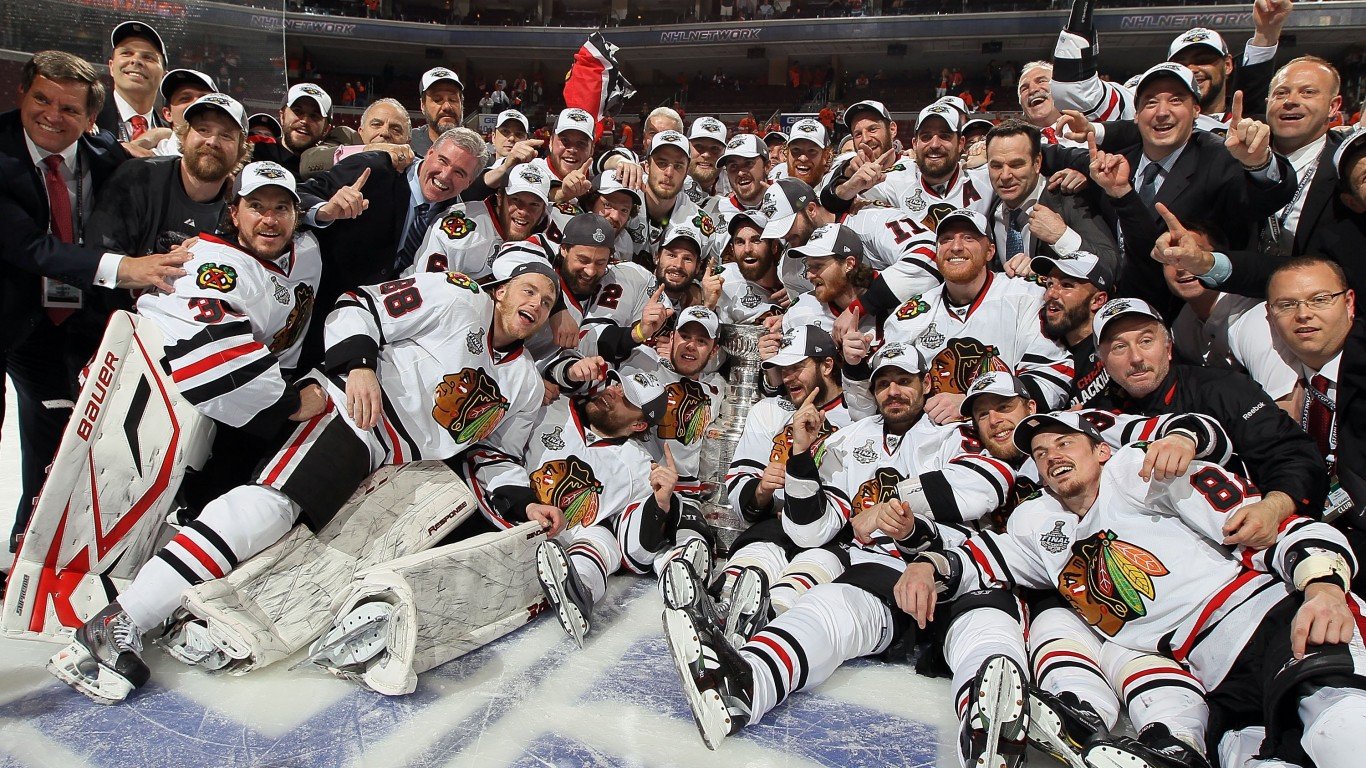
3. 2009-2010 Chicago Blackhawks
> Payroll: $48.3 million
> Payroll rank: 16 out of 30 teams
The 2010 Stanley Cup was the first of three Cups the Chicago Blackhawks won during their 2010s dynasty. The team’s continued success was the result of key contributions of many younger players. Patrick Kane led Chicago in scoring, and Jonathan Toews was named captain and would eventually go on to win the Conn Smythe Trophy as playoff MVP. Both were just 21 years old and took up less than $1 million in cap space each.
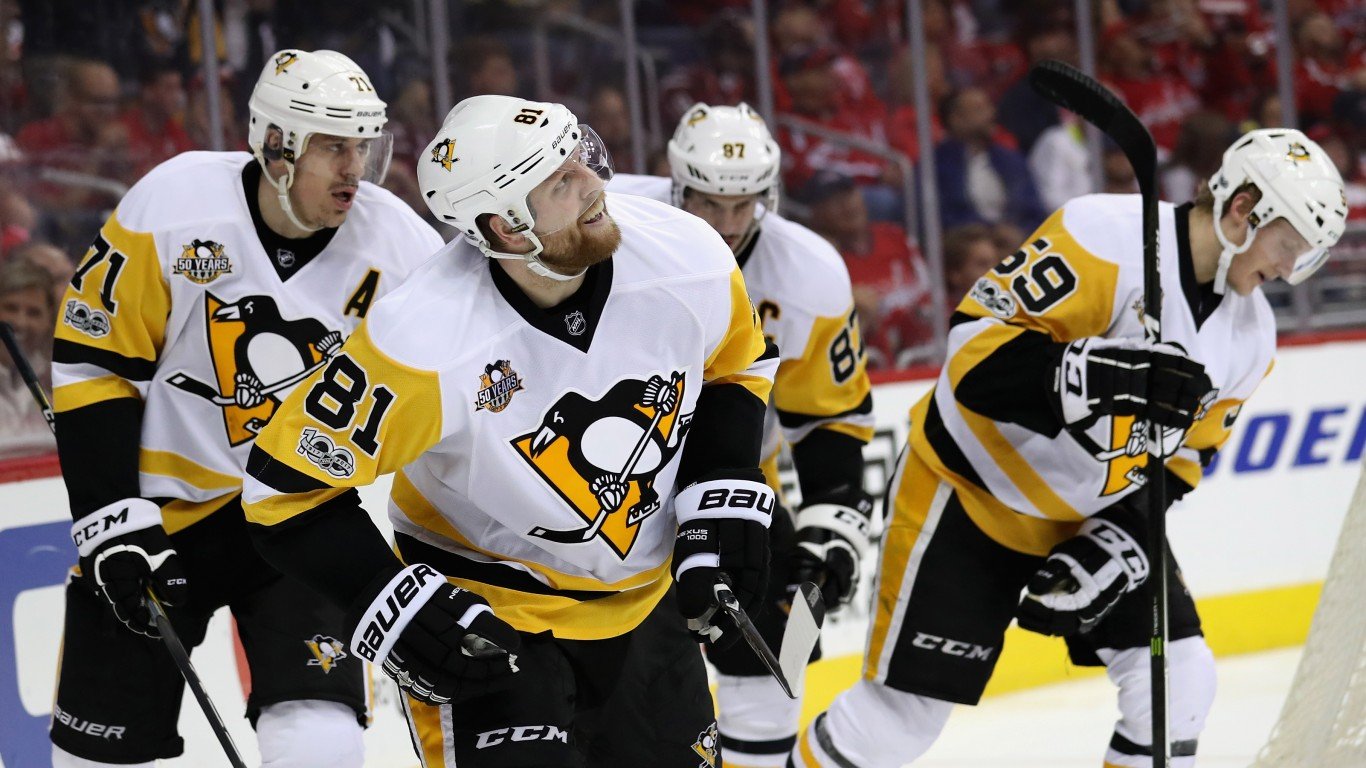
2. 2016-2017 Pittsburgh Penguins
> Payroll: $70.3 million
> Payroll rank: 17 out of 30 teams
The 2016-2017 Pittsburgh Penguins were loaded with high priced talent. Superstar players like Evegeni Malkin, Sidney Crosby, Phil Kessel, and Marc-Andre Fleury added up to over $30 million worth of cap space. Yet Pittsburgh was still able to have one of the lower payrolls in the NHL that season by saving money on defense. Pittsburgh’s defensemen had a combined cap hit of less than $8 million, by far the lowest in the NHL.

1. 2003-2004 Tampa Bay Lightning
> Payroll: $34.1 million
> Payroll rank: 21 out of 30 teams
The 2003-2004 Tampa Bay Lightning became the only team in modern NHL history to win a Stanley Cup while ranking among the bottom 10 in payroll the season they won. The four top spending teams all had player salaries more than double Tampa Bay’s payroll of $34.1 million. The average team payroll was over $44 million that season. The Lightning were able to win with such low payroll largely thanks to Martin St. Louis’ breakout season. The Lightning right wing led the NHL in points, winning his first Hart Trophy as the NHL’s most valuable player — all while making just $1.5 million that season.
NFL Teams that won a Championship on a Shoestring Budget
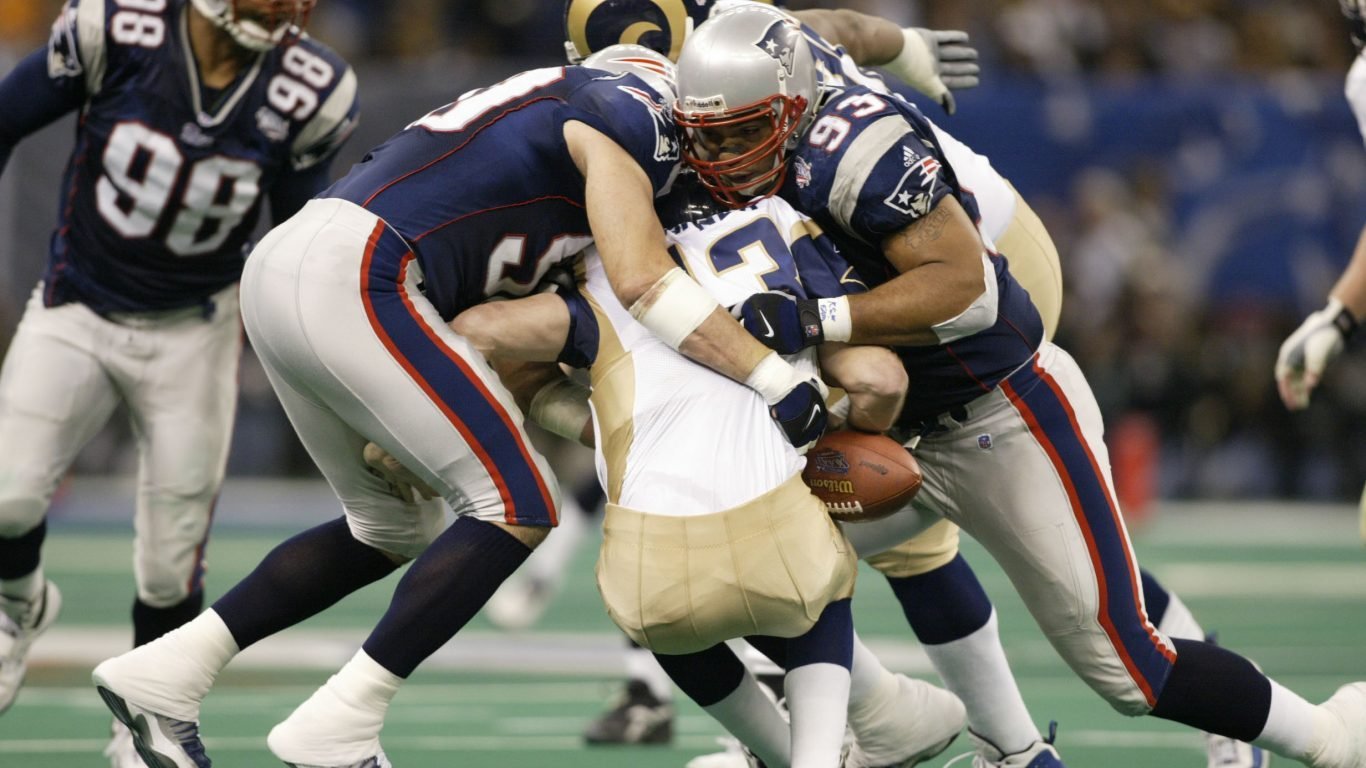
5. 2001 New England Patriots
> Payroll: $65.8 million
> Payroll rank: 24 out of 31 teams
Bill Belichick and the New England Patriots have proved to be the best in the NFL at winning Super Bowls without overspending. They did it for the first time in 2001, when the team had just $65.8 million in salary — the eight lowest payroll in the league. That season, the average payroll across all NFL teams was over $70 million, and the top-spending Denver Broncos had over $102 million in salaries on the books. The key to New England’s first Super Bowl was Tom Brady, who earned less than $300,000 in salary that season as he was a backup QB, drafted in the sixth round the season before. The original starter, Drew Bledsoe, was in the first season of a 10-year, $103 million contract. The deal was back loaded, so it cost the Pats less than $5 million that season. After Brady’s emergence, Bledsoe was traded to Buffalo. Experienced offensive linemen are often expensive, but New England’s line had just one player with more than three years of experience in the NFL. This helped keep costs down for New England’s first Super Bowl run.

4. 2004 New England Patriots
> Payroll: $77.0 million
> Payroll rank: 24 out of 32 teams
The 2004 New England Patriots had a payroll of nearly $77 million — over $40 million lower than the top-spending Washington Redskins that season. These Pats invested heavily in their defense, paying multi-million dollar salaries to players like Ty Law, Willie McGinest, Richard Seymour, and Teddy Bruschi. The team saved money by relying on Tom Brady to elevate young, unproven, and inexpensive players on offense. New England’s top three receivers, David Givens, David Patten, and Deion Branch, earned less than $2.5 million combined. Running back Corey Dillon had a career-best 1,635 rush yards that season, though he took up just $1.2 million of cap space.
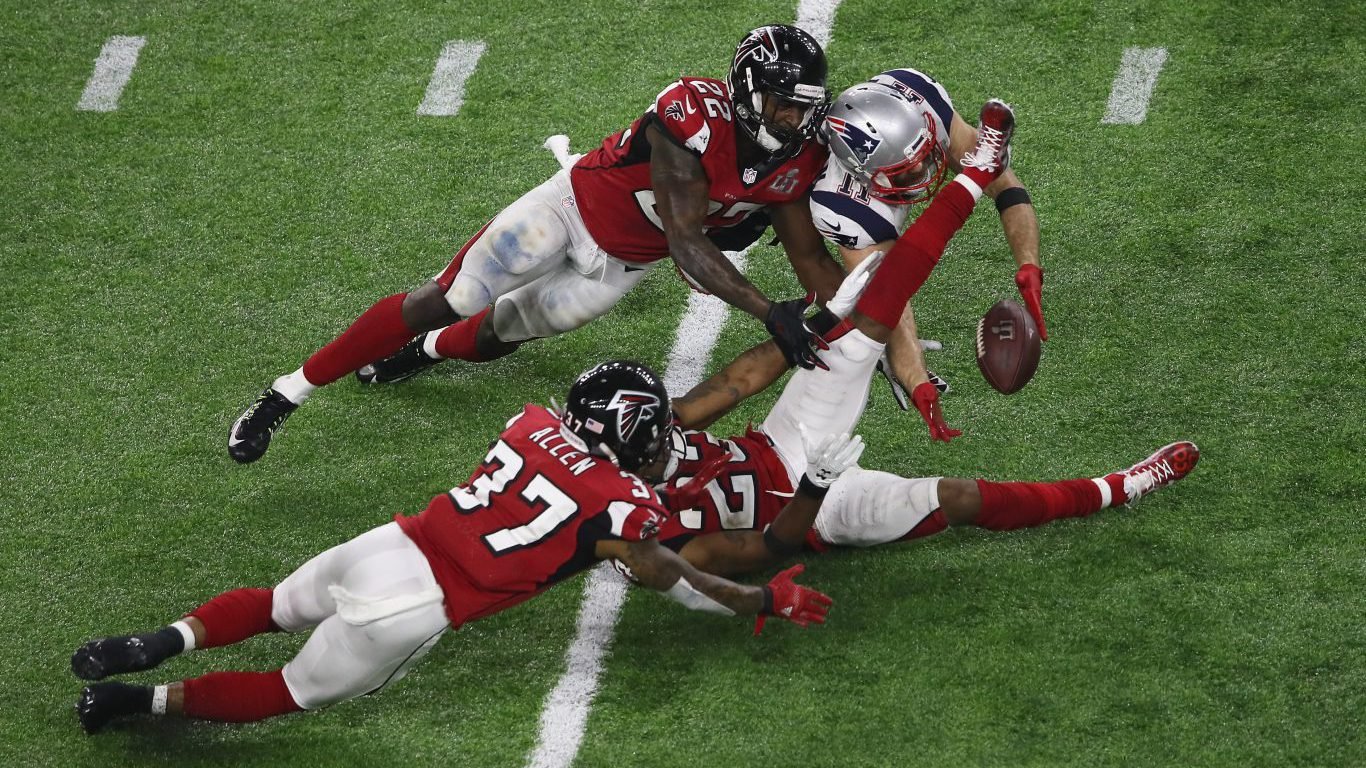
3. 2016 New England Patriots
> Payroll: $148.8 million
> Payroll rank: 26 out of 32 teams
The New England Patriots won their fifth Super Bowl after the 2016 season while spending the seventh lowest amount on salary of any team that season. The Pats paid relatively high salaries to players in key positions, like QB Tom Brady, left tackle Nate Solder, and linebacker Dont’a Hightower, but got excellent production from young players on their rookie deals. Starting cornerbacks Logan Ryan and Malcolm Butler earned less than $2.5 million combined, and starting guards Joe Thuney and Shaq Mason each cost New England less than $650,000. Defensive end Trey Flowers, in his second season, led New England’s top-ranked scoring defense in sacks while earning about $670,000.
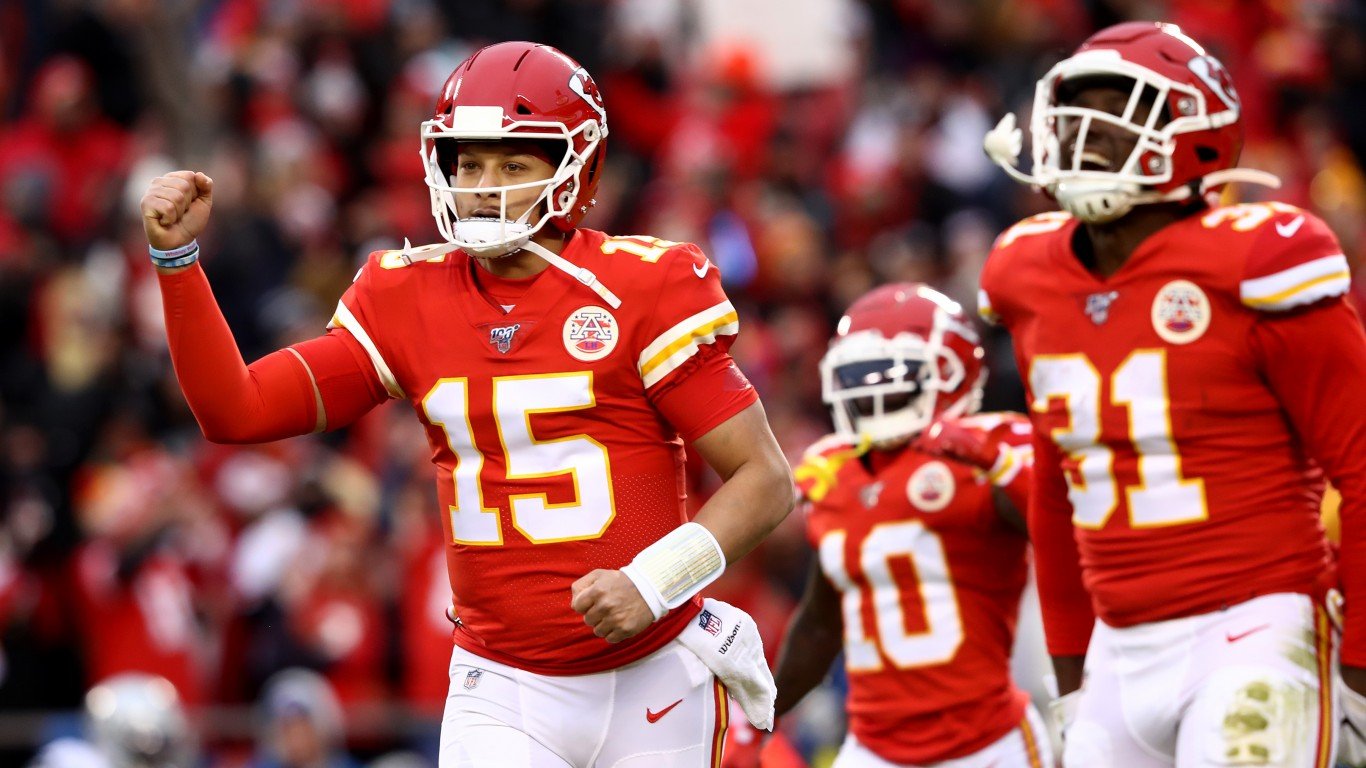
2. 2019 Kansas City Chiefs
> Payroll: $167.0 million
> Payroll rank: 32 out of 32 teams
The Kansas City Chiefs won their first Super Bowl in 50 years thanks to their core group of young stars. No 2019 NFL team had a lower salary than the Chiefs, at just under $167 million. In the Super Bowl, they beat the top-spending San Francisco 49ers, who had a $221.7 million payroll. Patrick Mahomes, the 2018 NFL MVP, was still on his rookie contract, adding less than $5 million to Kansas City’s salary cap expenditure. Receivers Mecole Hardman and Tyreek Hill both made the Pro Bowl — Hardman was on a rookie deal that paid him just under $1 million, and Hill just signed a back loaded extension that paid him just over $2 million for 2019. All-Pro safety Tyrann Mathieu’s contract was also back loaded, so his 2019 salary on the books was just under $6 million. Pro Bowl defensive end Chris Jones was in the final year of his rookie deal that paid him just under $2 million. He will earn over $16 million in 2020.
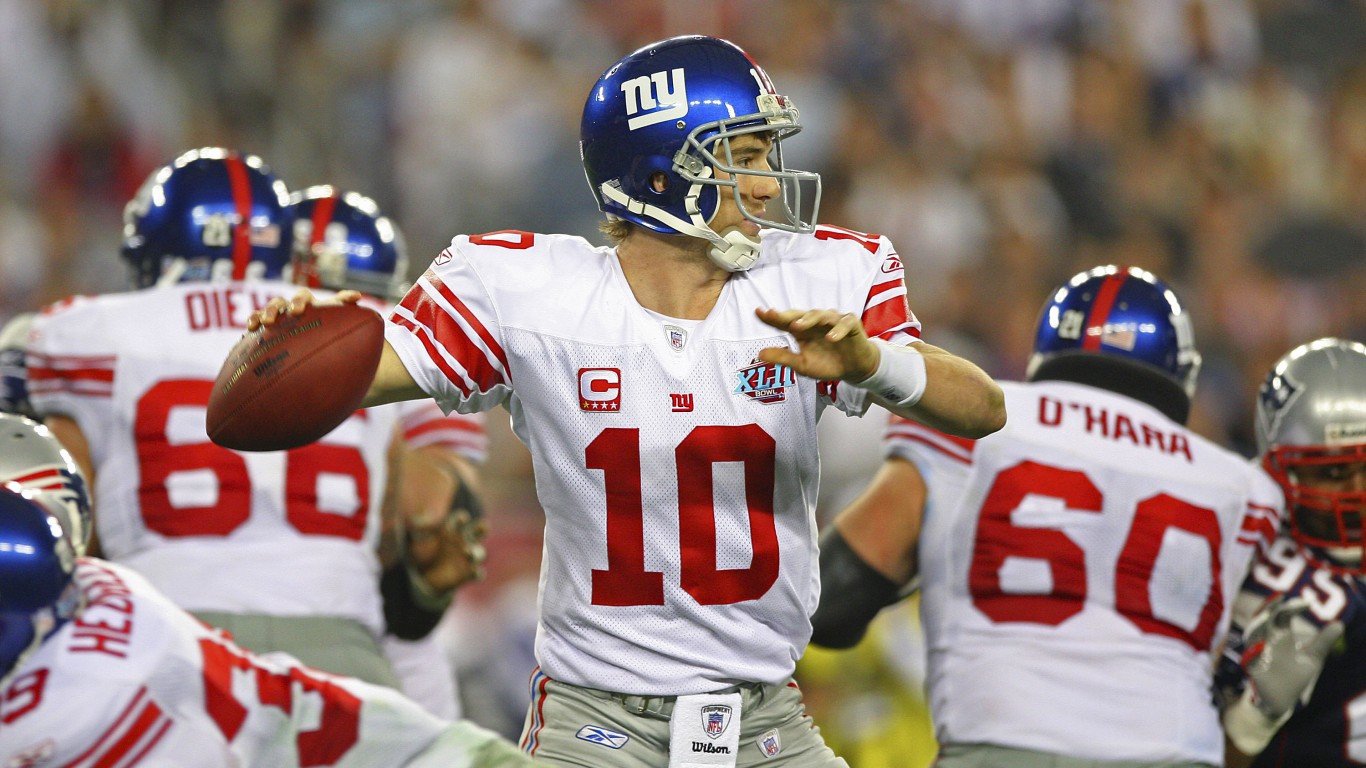
1. 2007 New York Giants
> Payroll: $75.8 million
> Payroll rank: 32 out of 32 teams
The 2007 New York Giants pulled off one of the greatest upsets in sports history by taking down the undefeated New England Patriots in Super Bowl XLII. The victory looks all the more impressive when you note that New York had the NFL’s lowest payroll at just $75.8 million, while the Pats ranked second at nearly $118 million. The Giants were able to keep costs down because they were relatively young, with many players on their rookie contracts. Of the team’s 22 offensive and defensive starters, a dozen had four or fewer years of experience, including QB Eli Manning. The Giants running back tandem of Ahmad Bradshaw and Brandon Jacobs earned less than $900,000 combined.
